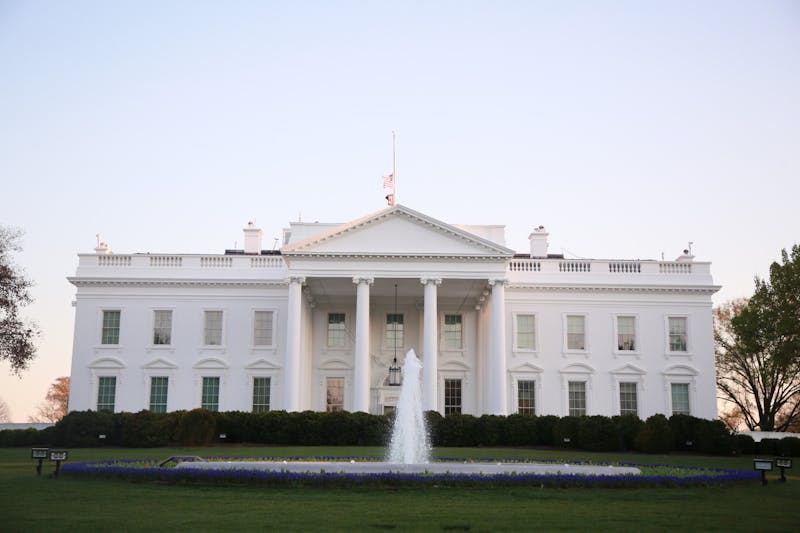While the University develops in all directions, the east side of campus -- adjacent to the Schuylkill River -- has the most potential to connect us to Center City and to improve student life. Concentrating on that edge provides the greatest opportunity to better weave Penn into the city's cultural and economic tapestry. But without a blueprint for future development, the campus has looked and felt like a crazy quilt. Now, that blueprint is here. It is called the Campus Development Plan, 2001. Approved by the Trustees in February, its key findings "review existing conditions for every aspect of campus life," and sketch a idea of Penn's physical future. Though the parts of the plan that focus on the east campus don't go far enough, they are an auspicious beginning. The plan calls for creating "significant open space with views to the Schuylkill River and Center City in the redevelopment of the Civic Center site." It further suggests "a stronger entry experience on the South Street bridge." Why stop there? The South Street bridge is a pock-marked mess of crumbling concrete, damaged pre-World War II fencing and dangerous conditions. There are no walk signs, although many students and faculty walk or ride their bikes across it. There are no bike lanes, although traffic is heavy and confusing, given the combination of on and off ramps. Accidents are common. And recently, something must have plunged over the edge next to the Hollenback Center, because a car-width of fencing is gone. Pedestrians are warned away from the hole by police tape and a scrap of short, temporary chain-link fence. And this is the artery that links the vital research institutions around Spruce Street to Center City. This is the gateway that prospective biotech firms see along the Center City-University axis as they attend conferences and meetings with Penn researchers. It screams, erroneously, "Rust belt! Decay! Live here? Work here? Run away!" One area that creates a Berlin Wall between East and West Philly provides one of the most breathtaking views on foot in Philadelphia. Ironically, it is not mentioned in the key findings of the plan. It is the amazing east side of the Schuylkill river between the South Street bridges, going north to Fairmont Park. There, you can walk along the capped stone embankment to view the expanse of bridges and the Art Deco Post Office building. You see how 30th Street Station was meant to dominate the view from the river, because it is up on a hill. It must be the fastest way to get to the Philadelphia Art Museum on foot from the University. It was always meant to unify the architecture along the river. The problem: the city and the state defer the simple task of development and maintenance until tirelessly pressed. This corridor, used as a mountain bike path and a dog walk by the truly hardy, could rival scenic park paths anywhere. It is a logical, short extension of the Fairmont Park trail system, which should be completely accessible on foot or via bike from the University. For the cost of cleanup, paving and fencing the active train line, the University -- in partnership with the city and the state -- would have a simple, inexpensive, arcing park from which future development could radiate on both sides of the river. The trail provides a view of bridges that are as beautiful as anything spanning the Seine, except that this riverside walk culminates at Boathouse Row. The Schuylkill reminds me of the Potomac River. For all its problems, the Potomac has the Chesapeake and Ohio Canal, which climbs out of Washington, D.C. along the craggy southern border of Maryland, to unify three metropolitan regions. The C & O Canal is part of the National Park System, but I am aware of a Pennsylvania State Park System that has done great things, especially with dedicated partners. Growth is ego challenging. Our campus development plan must push, stripping out preconceptions as though renovating a historic house. We study the plasterwork, the tall baseboards and trim that bring architectural continuity throughout the house to see what original elegance existed. In Philadelphia, historic grace lies beneath the grime, within a city plan that is as old as the nation, whose architects believed in our ability to see the beauty they left for us; it extends outside of all our perceived boundaries.
The Daily Pennsylvanian is an independent, student-run newspaper. Please consider making a donation to support the coverage that shapes the University. Your generosity ensures a future of strong journalism at Penn.
DonatePlease note All comments are eligible for publication in The Daily Pennsylvanian.







